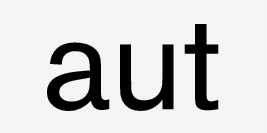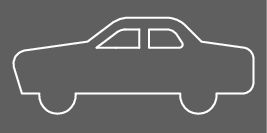Fuel consumption and CO2 emissions
Fuel consumption in a vehicle is measured in litres per 100 km and CO2 emissions in grams CO2 per km.
 | gram CO₂/km |
 | litre/100 km |
 | combined driving |
 | Automatic gearbox |
 | Certified value for the car's potential range ("up to") in km for electric operation. The value should not be interpreted as an expected range and the range is difficult to achieve during normal driving. |
If the consumption and emission data is missing then it is included in the enclosed supplement.Note
 |  | |||
|---|---|---|---|---|
 |  |  | ||
| T8 Twin Engine (B4204T35) |  | 49 | 2.1 | 43[1] |
The capacity of the hybrid battery diminishes with age and use, which may result in increased use of the internal combustion engine and, as a consequence, reduced fuel economy and reduced range during electric operation.Note
The values in the table above for fuel consumption, emissions and range for electric operation are based on specific EU driving cycles (see below), that apply to cars with kerb weight in the basic version and without extra equipment. The car's weight may increase depending on equipment. This, as well as how heavily the car is loaded, increases fuel consumption and carbon dioxide emissions as well as reduces the range for electric operation.
The certified values for the car must not be interpreted as expected values. The certified values are comparison values obtained during special "EU driving cycles" (see below).
There are several reasons for increased fuel consumption and shorter mileage on electric power compared with the table's values. Examples of this are:
- If the car is not charged regularly from the mains power circuit.
- If the car is equipped with extra equipment that affects the car's weight.
- The driver's driving style.
- If the customer chooses wheels other than those fitted as standard on the model's basic version then rolling resistance may increase.
- High speed results in increased wind resistance.
- Fuel quality, road and traffic conditions, weather and the condition of the car.
A combination of the above-mentioned examples can result in significantly increased consumption.
Large deviations in fuel consumption may arise in a comparison with the EU driving cycles (see below) which are used in the certification of the car and on which the consumption figures in the table are based. For further information, please refer to the regulations referred to.
Extreme weather conditions, driving with a trailer or driving at high altitudes in combination with fuel quality are factors that considerably increase the car's fuel consumption.Note
EU driving cycles
Official fuel consumption figures and the range for electric operation are based on two standardised driving cycles in a laboratory environment ("EU driving cycles") all in accordance with EU Regulation no 692/2008 and 715/2007 (Euro 5 / Euro 6) and UN ECE Regulation no 101. Since the driving cycles are also used for quality control, there are significant requirements for repeatability of the tests. For this reason the tests are carried out under close scrutiny and only with the car's basic functions (e.g. air conditioning, radio, etc. switched off). As a consequence of this the results from the official figures are not obviously representative of what the customer sees during actual usage.
The regulations cover the driving cycles for "Urban driving" and "Extra-urban driving":
- Urban driving - the measurement starts with cold starting the engine. The driving is simulated.
- Extra-urban driving - the car is accelerated and braked at speeds between 0-120 km/h (0-75 mph). The driving is simulated.
The official value for combined driving, which is reported in the table, is a combination of the results from the "Urban driving" and "Extra-urban driving" driving cycles, in accordance with legal requirements.
The exhaust gases are collected in order to extrapolate the carbon dioxide emissions (CO₂ emissions) during the two driving cycles. These are then analysed and give the value for CO₂ emissions.